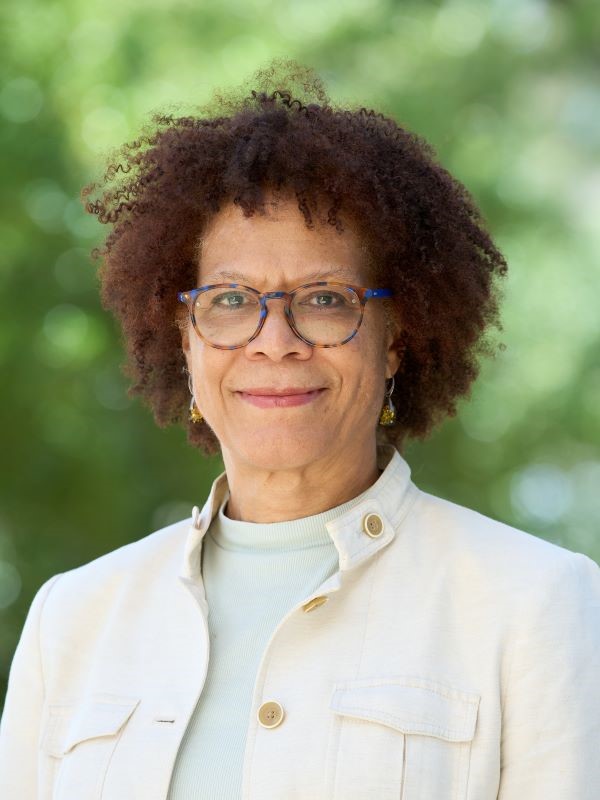Research Information
Induced seismicity from subsurface storage of fluids and energy related fluid injection activities
Sustainability of natural resource utilization
Data analytics and machine learning for improved subsurface imaging
Fault and fracture development in the subsurface, fluid flow in fractures for reservoir characterization
Societal impacts of energy resource utilization and transition to a lower carbon economy
Subsurface tomographic imaging using ambient noise
Research Interests
- Subsurface storage
- Induced seismicity
- Pore volume evaluation
- Fractured reservoir
- Discrete fracture network modeling
- Hydraulic fracturing
- Reservoir geomechanics
Educational Background
- BA – Oberlin College, Geology
- MA – The Johns Hopkins University, Structural Geology
- PhD – The Johns Hopkins University, Structural Geology
Industry Experience
- Structural geologist with over 30 years of experience in industry, government, and academia, she was previously a Research Scientist at the Illinois State Geological Survey at University of Illinois Urbana-Champaign, with appointments as a Research Associate Professor in the Department of Earth Science & Environmental Change, and in the Department of Civil & Environmental Engineering. Her areas of expertise include structural geology, with a focus on fracture analysis and modeling for geo-energy production, including a specialization in microseismic data interpretation and induced seismicity. She has research interests in natural and induced fracture analysis and modeling for the fossil fuels and mining industries, for geothermal energy production, and quantification of subsurface storage. Her previous positions include Research Scientist at the USGS working energy resources and fracture characterization at Yucca Mountain, Senior Research Scientist at Texaco and Chevron, GeoTeam Leader at Midland Valley as technical lead for fracture modeling software development, managing and doing sales and consulting, Chief Geologist at MicroSeismic Inc., where she developed a patented fracture modeling method using induced seismic events, and Geological Advisor at Oxy and California Resources. She has held adjunct positions at the University of Houston, California State U. Los Angeles and Northridge, and was a full-time faculty member at Whittier College and is a Licensed Professional Geologist in California.
Awards & Honors
- AAPG Distinguished Lecturer 2023 – 2024
- AAPG Honorary Member 2022
- Texaco Mentoring Excellence in Technology (mentee) 2000 – 2001
- AAPG Bulletin Citation of Excellence 2001
- USGS “Star Award” 1997
Selected Publications
- Wang, H., Williams-Stroud, S., Crandall, D. and Chen, C. (2022). Machine Learning and Deep Learning for Mineralogy Interpretation and CO2 Saturation Estimation in Geological Carbon Storage: A case study of CCS in Illinois Basin. Fuel, 361, 130586. https://doi.org/10.1016/J.FUEL.2023.130586
Schultz, R. A., Heinemann, N., Horváth, B., Wickens, J., Miocic, J. M., Babarinde, O. O., Cao, W., Capuano, P., Dewers, T. A., Dusseault, M., Edlmann, K., Goswick, R. A., Hassanpouryouzband, A., Husain, T., Jin, W., Meng, J., Kim, S., Molaei, F., Odunlami, T., Prasad, U., Lei, Q., Schwartz, B., Segura J., Soroush, H., Voegeli, S., Williams-Stroud, S., Yu, H., Zhao, Q. (2023). An overview of underground energy-related product storage and sequestration. Geological Society Special Publication, 528(1), 15–35. https://doi.org/10.1144/SP528-2022-160
Schultz, R. A., Williams-Stroud, S., Horváth, B., Wickens, J., Bernhardt, H., Cao, W., Capuano, P., Dewars, T. A., Goswick, R. A., Lei, Q., McClure, M., Prasad, U., Schwartz, B. A., Yu, Ha., Voegeli, S., Zhao, Q. (2023). Underground energy-related product storage and sequestration: site characterization, risk analysis, and monitoring. Geological Society, London, Special Publications (Vol. 528). The Geological Society Special Publications. https://doi.org/10.1144/sp528-2022-66
Leetaru, H. E., Williams-Stroud, S., Freiburg, J., McBride, J., & Whittaker, S. (2022). Geologic Risk and Uncertainty for Underground Storage of Buoyant Fluids, Lessons Learned in Illinois. Geological Society, London, Special Publications, 528(1). https://doi.org/10.1144/SP528-2022-85
Bondarenko, N., Podladchikov, Y.Y., Williams-Stroud, S., Makhnenko, R., Stratigraphy-Induced Localization of Microseismicity During CO2 Injection in Illinois Basin. ESS Open Archive . May 21, 2024.
DOI: 10.22541/essoar.171629597.77744897/v1
Bondarenko, N., Williams-Stroud, S., Freiburg, J., & Makhnenko, R. (2021). Geomechanical aspects of induced microseismicity during CO2 injection in Illinois Basin. The Leading Edge, Society of Exploration Geophysicists, 40(11), 823–830. https://doi.org/10.1190/TLE40110823.1
Dichiarante, A. M., Langet, N., Bauer, R. A., Goertz-Allmann, B. P., Williams-Stroud, S., Kühn, D., Oye, V., Greenberg, S.E, Dando, B.D.E. (2021). Identifying geological structures through microseismic cluster and burst analyses complementing active seismic interpretation. Tectonophysics, 820, 229107. https://doi.org/10.1016/J.TECTO.2021.229107
Williams-Stroud, S., Bauer, R., Leetaru, H., Oye, V., Stanek, F., Greenberg, S., & Langet, N. (2020). Analysis of microseismicity and reactivated fault size to assess the potential for felt events by CO2 injection in the Illinois Basin. Bulletin of the Seismological Society of America, 110(5):2188-2204. https://doi.org/10.1785/0120200112
Langet, N., Goertz-Allmann, B., Oye, V., Bauer, R. A., Williams-Stroud, S., Dichiarante, A. M., & Greenberg, S. E. (2020). Joint focal mechanism inversion using downhole and surface monitoring at the Decatur, Illinois CO2 injection site. Bulletin of the Seismological Society of America, 110(5): 2168-2187. https://doi.org/10.1785/0120200075
Holt, N. M., Garcia-Veigas, J., Lowenstein, T. K., Giles, P. S., and Williams-Stroud, S. C. (2014), The major-ion composition of Carboniferous seawater, Geochemica et Cosmochemica Acta, v. 134, pp. 317-334
Duncan, P. M., Smith, P. G., Smith, K., Barker, W. B., Williams-Stroud, S., and Eisner, L. (2013), Microseismic Monitoring in Early Haynesville Development, in Geology of the Haynesville Gas Shale in East Texas and West Louisiana, AAPG Memoir 105, Chapter 12, pp. 219-236
Williams-Stroud, S.C., Ozgen, C., and Billingsley, R. (2012), Microseismicity-constrained discrete fracture network models for stimulated reservoir simulation, Geophysics, 78(1), https://doi.org/10.1190/geo2011-0061.1
Wessels, S. A., De La Pena, A., Kratz, M., Williams-Stroud, S., Jbeili, T. (2011), Identifying faults and fractures in unconventional reservoirs through microseismic monitoring, First Break, 29, July 2011.
Eisner, L., Williams-Stroud, S. C., Hill, A., Duncan, P., and Thornton, M. (2010), Beyond the dots in the box: Microseismicity-constrained fracture models for reservoir simulation, The Leading Edge, vol. 29, 326-333.
Petrychenko, O. Y., Williams-Stroud, S., C. and Peryt, T. M. (2012), The relationship of brine chemistry of the Paradox Evaporite Basin (southwestern USA) to secular variation in seawater chemistry, Geological Quarterly, vol. 56, p. 25-40.
Williams-Stroud, S. C., Kilpatrick, J. E. Cornette, B., Eisner, L. and Hall, M. (2010), Moving outside of the borehole: Characterizing natural fractures through microseismic monitoring, First Break, 28, no. 7.
Sweetkind, D. S., Anna, L. O., Williams-Stroud, S. C., and Coe, J. A. (1997), Characterizing the fracture network at Yucca Mountain, Nevada, Part 1, Integration of field data for numerical simulations, Hoak, T. E., Klawitter, A. L., and Blomquist, P. K., eds., Fractured Reservoirs: Characterization and Modeling, p. 185-196.
Williams-Stroud, S., and Paul, J. (1997), Initiation and growth of gypsum piercement structures in the Zechstein Basin, Journal of Structural Geology, 19 (7), p. 897-907.
Williams-Stroud, S. (1995), Solution to the Paradox? Results of some chemical equilibrium models and mass balance calculations as applied to the Paradox basin evaporite deposit, American Journal of Science, vol. 294, p. 1189-1228.
Williams-Stroud, S. (1994), Evolution of an inland sea of marine origin to a non-marine saline Lake: The Pennsylvanian Paradox salt deposit, SEPM Special Publication 50, p. 293-306.
Williams, S. (1988), The shear strength of gypsum single crystals on three cleavage planes, Tectonophysics, v. 148, p. 163-173.
Williams, S. (1988), The shear strength of gypsum single and polycrystals and its implications for petrofabric analysis. Unpublished Ph.D. dissertation, The John Hopkins University, 152 p.
Scientific Leadership
National Petroleum Council (Oil and Natural Gas Advisory Committee to the Secretary of Energy): Member of Coordinating Subcommittee, Natural Gas Greenhouse Gases Study (2022 – 2024). This study produced the report: Charting the Course, which examined the sources of greenhouse gases in the natural gas value chain, technologies for monitoring, measuring, and mitigation, analyzed future GHG reduction scenarios and societal impacts of current and future activities.
National Academy of Sciences, Engineering, and Medicine: Member of the Committee on Geodynamics (2015 – 2019). Standing committee of the National Academy of Sciences that serves as the focal point for community discussion and community-agency interaction on issues related to the structure, dynamics, and evolution of the Earth.
American Rock Mechanics Association: Member of Technical Committee on Discrete Fracture Network Modelling (DFNTC), and Subgroup lead for the Discrete Fracture Network (DFN) in Energy (Oil & Gas, Renewables, and CCUS). Member of Underground Storage & Utilization Technical Community
American Association of Petroleum Geologists: Chair of Core and Sample Preservation Committee (2004 – 2006), Vice Chair (2002 – 2004)

